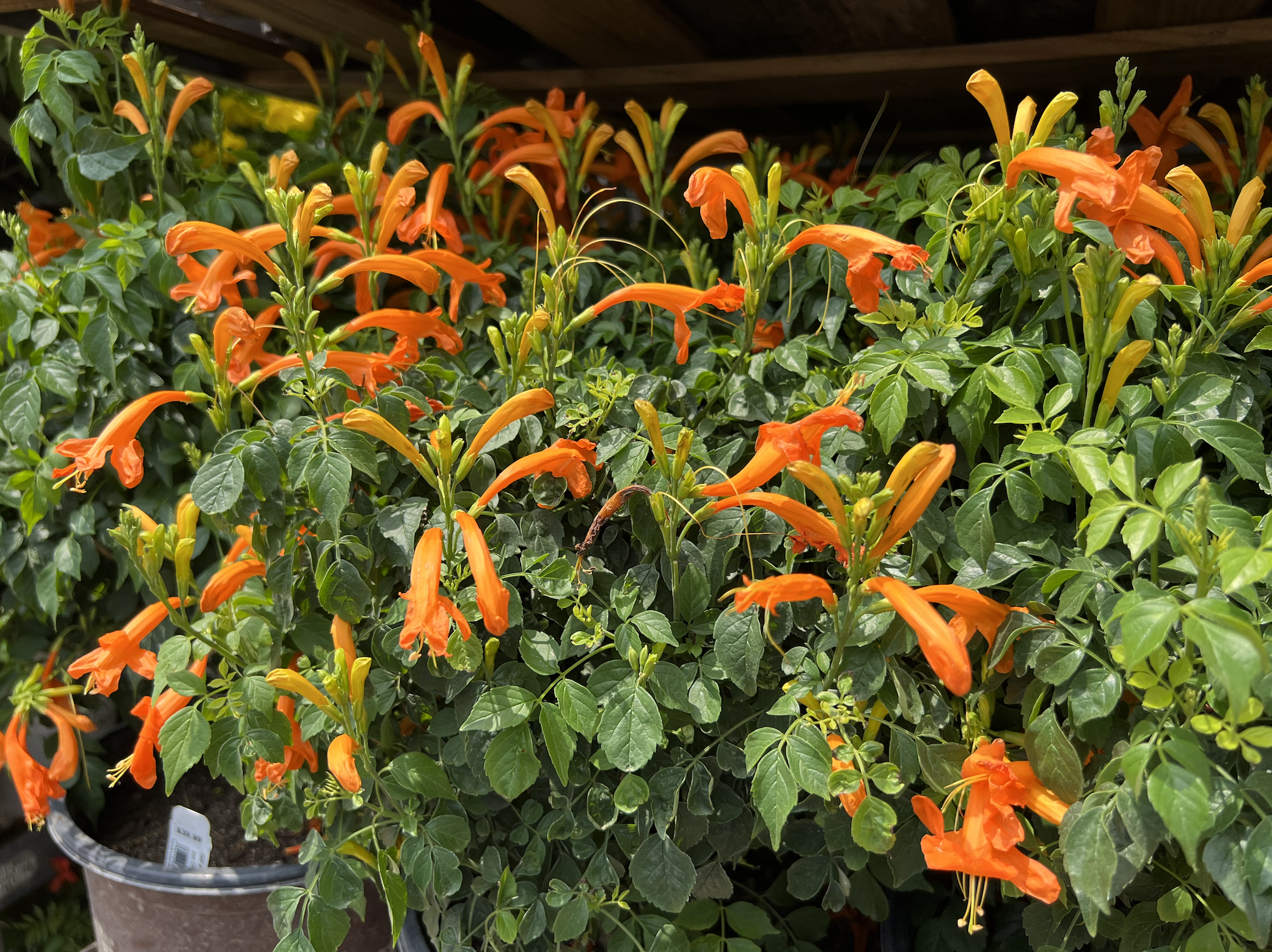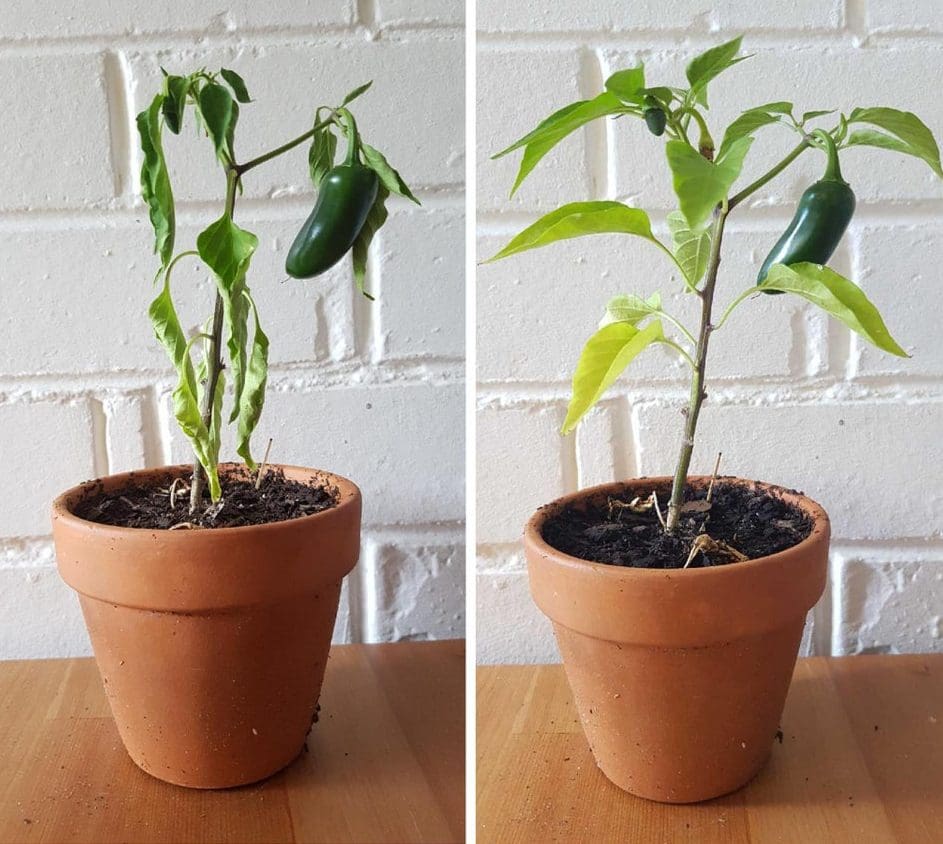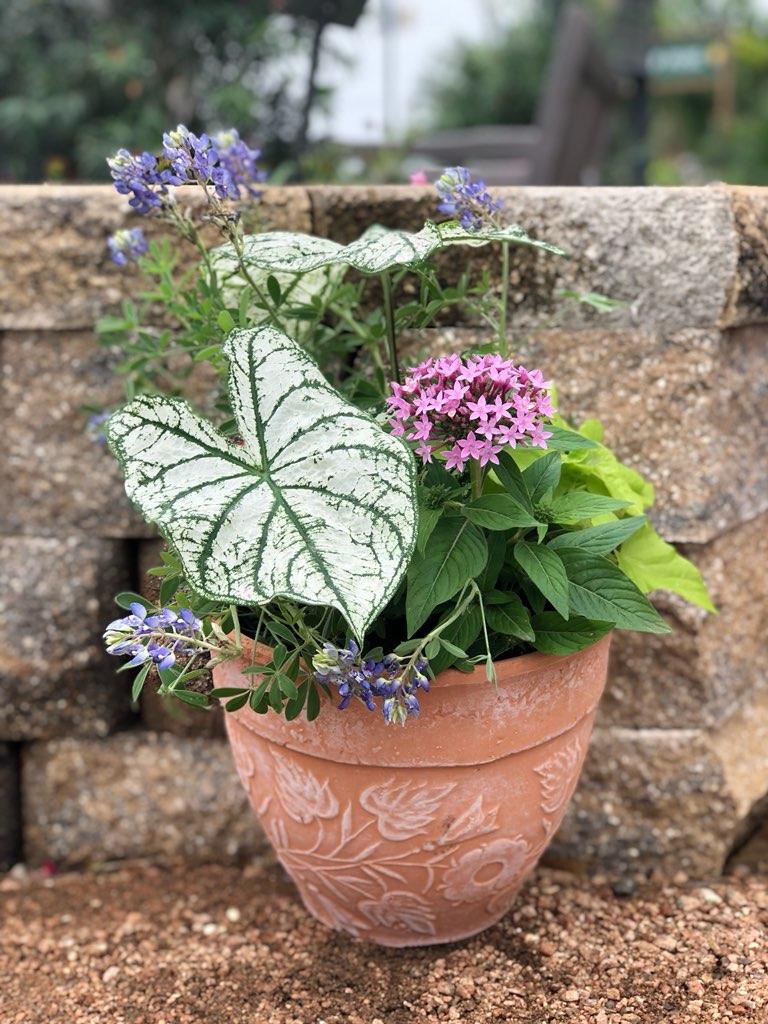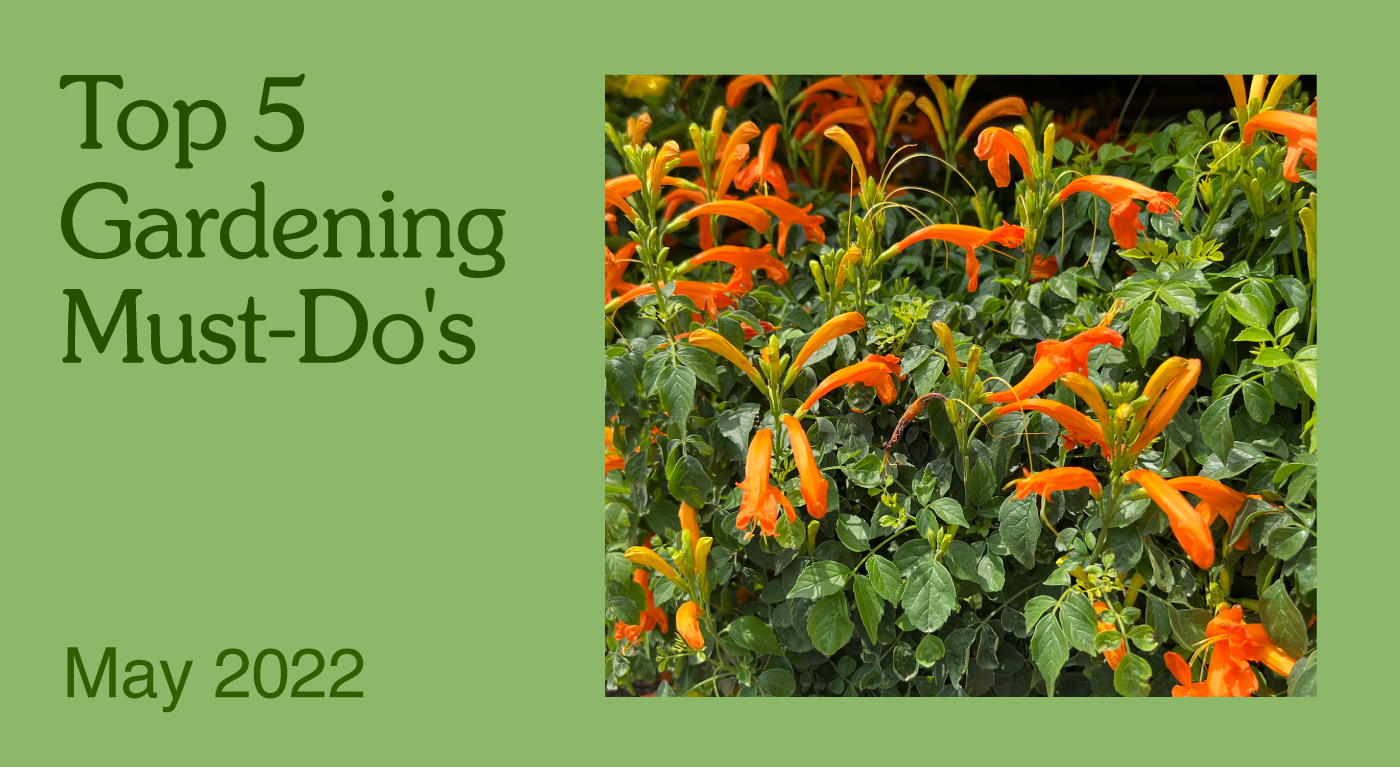May means Mom’s Day, graduations, and more BBQs and family holidays outside! May is also Mental Health Awareness Month. As gardeners, we know growing plants and being outdoors are necessary for our wellbeing…and so much fun! Here are our Top 5 Must Do’s this May to help you and your garden make the transition to warmer weather.
Check out our May Garden Guide for more tips and remember that trees, shrubs, and perennials can be planted 12 months out of the year! The only difference is the amount of water they need depending on temperatures and wind!
1. Plant Blooming Perennials

It’s still time to plant lots of different blooming perennials. Get them established now so they are better adapted to withstand warmer temps this Summer. Staples like Esperanza, many varieties of Salvia, Jatropha, Lantana, and more are all blooming beautifully right now. We’re excited about Cape Town Honeysuckle this month (see pic above). It grows to about 4-5’ tall and wide, whereas its relative, Cape Honeysuckle, grows to 8’ or more. Lots of blooms and lots more options for placement. Added bonus: these blooming perennials attract pollinators like butterflies and hummingbirds!
2. Plant and Harvest Veggies

Warm weather veggie time! Plant peppers, zucchini, squash, and okra this month for continued harvesting into the Summer months. If you planted tomatoes, cucumbers, and other early Spring veggies, you’ll be harvesting now or soon. Be sure to harvest often! It keeps birds & insects from finding them first. If you do have insect issues in your veggie garden, our go-to organic control is Spinosad – safe for food but takes care of bugs. And remember to keep watering as the weather warms up. Soaker hoses are great to snake around your plants keeping water close to the ground and root systems.
3. Tend Your Lawn

It’s vital to water your lawn once a week unless we have rain. Invest in a sprinkler that’ll do the work – we have them. Hand watering the lawn may feel therapeutic, but you won’t get good coverage and depth.
When mowing, the proper height for St. Augustine lawns is around 3 inches. For Bermuda lawns keep mowed to around 2-2.5 inches.
Feed with Natural Fertilizers: Medina Growin Green or Milorganite. These feed the lawn and the soil with great results. Water in to get them started.
Watch for lawn insects & treat when needed. Grub worms & chinch bugs are easy to control when caught early but there’s no need to treat unless you have them. Bayer Season-long Grub Control will do the trick for grubs. Cyonara takes care of chinch bugs.
4. Look for Thirsty Plants

Watch your plants and they will show you when they need a drink. Most show signs of wilting (see photo). That’s a sign they need water soon. Once you give them a drink, they perk up quickly. But some will not tell you until it is too late, like a live oak tree. Invest in a moisture meter. They help to read the moisture with a poke into the soil around the roots. We have them and they’re very easy to use.
5. Gifts for Moms and Grads

Let us help you find something pretty, useful, or both for the gardening moms and grads in your life. Pottery, birdbaths, wind chimes, garden tools, hats, gloves – lots of options. Or the gift that gardeners love most – plants!
Check out our May Garden Guide for more tips! Happy gardening!



Debbie Pearce says
For a potted indoor fiddle fig (that has been doing great since I got it in September)… is this the time of year to fertilize? Best fertilizer?
Thanks!
Jesse says
We love liquid organic Hasta Gro by Medina for houseplants including the fiddle leaf fig. Very easy to mix with water and no smell! You can use it anytime, about once a month.
Elsa Craig says
Our elements of design include texture and color. In the landscape, they are used to transform space and create a unique experience in lawn care.
Teresa Ryan says
What is Cycle Soak that is mentioned on this Comments Page?
Jesse says
Cycle Soak is a method for ensuring that you are watering your lawn deep enough. More info here: https://agrilifeextension.tamu.edu/blog/2015/08/06/cycle-soak-method-of-lawn-irrigation/
Jennifer Tobar says
What is the best commercial preemergent to get rid of blue grass and/or crabgrass that has already sprouted. Any other suggestions are appreciated!
Thank you
Daniel says
Tomatoe plants . Can I cut back some of the leaves from the base of the plant .
Plants are 3 to 4 ft.
Carrie Meyer says
In the last photo, what is that spiral thing with stones? Are they going to plant something in the dirt or is it to walk on …?
Also – besides okra, is there anything else you can still plant here in May?
Jesse says
That particular spiral thing is just a cool design in the garden. But you could do something similar for a planting bed! You can still plant peppers, Mediterranean herbs, maybe even cucumbers!
Judy says
We water after cutting on Wednesday and again automatically on Thursday early morning. Is that too far apart to benefit from the cycle and soak method?
Thanks
DeAnna says
Cycle soak is same day or next day so you are perfect.